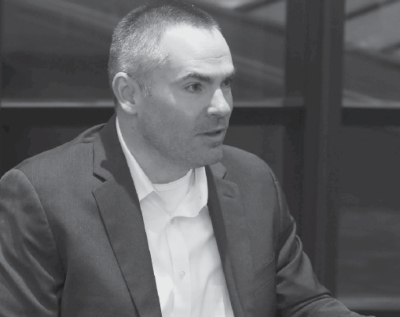The Realities and Vision of Value-Based Hospice Care
As efforts to improve and overhaul the US healthcare system focus on a concept called “value-based care,” what can other medical providers learn from the hospice profession—particularly with its 40-year focus on care that meets patients’ needs?
And how are hospice providers themselves approaching value-based care?
Value-based care is a model that emphasizes preventive health for patients and rewards for physicians who coordinate care, provide appropriate care based on each patient’s situation and improve actual health outcomes.
Two VITAS executives—Chief Medical Officer and Senior Vice President Dr. Joseph Shega, and Senior Vice President of Strategy and Innovation Brandon Stock—recently participated in a robust American Hospital Association panel discussion about value-based care.
Participants tackled the cultural, operational and financial challenges facing hospitals and health systems as they help patients near the end of life choose and transition to end-of-life care settings.
Following are what our experts said on leading topics:
How Hospitals and Healthcare Providers Redefine the Value of the Care They Provide
Shega says that hospitals need to be committed to serving patients from birth to death.
“Setting that standard as the philosophy of your hospital or health system is a powerful message to communicate to patients and families as well as healthcare professionals,” he says. “‘Life is a journey. We’re never going to abandon you on that journey, and we’ll help you through the whole process.’ I think that’s a powerful way that health system leaders can leverage population health and support their communities. And they need to develop necessary partnerships with hospice providers to ensure the right care to patients at the end of their lives.”
When Costly, End-of-Life Care Collides with Patients’ Preferences for Comfort
“To be covered under Medicare hospice benefits, patients have to sign a statement that they choose comfort care over care aimed at curing their illnesses,” Shega says, describing the requirement as a “big barrier.”
“Patients receiving specialized treatment may worry about getting the support they need when curative measures cease,” he says. “Because of this, some patients hesitate to enroll in hospice. Even a lot of clinicians think that hospices will stop all supportive medications that patients are on... This isn't the case. Hospices are paid a daily rate per patients by Medicare. We only get a predetermined amount of money, and then we’ve got to make it work financially. For some hospices, that means turning down high-acuity patients who require specialized treatments. VITAS' for-profit status provides resources that allow us to take on any eligible patient, regardless of the severity of their illness or the treatments they require.
“(VITAS) recognizes that supportive treatments can improve the quality of life…. Comfort care can include supportive treatments that aim to reduce disease symptoms or address short-term infections. These might include antibiotics, IV fluids, total parenteral nutrition and ACE inhibitors or inotropes (a heart pump medication) for heart failure. From a cancer perspective, it might be hormonal therapy, thermotherapy or radiation intended solely for symptom relief. These treatments can improve quality of life in a patient’s final months. Restorative treatments, such as physical and occupational therapy, also can be seen as supportive when they are intended to improve quality of life.”
The Need for Seamless Healthcare/Hospital – Hospice Partnerships
Stock says VITAS is evaluating many of the new value-based care models that the Center for Medicare and Medicaid Innovation is testing to understand how hospice and palliative care can fit into these innovative approaches.
VITAS is looking at questions such as:
- What do these models look like from an operational and business perspective?
- How can hospice and palliative care align with hospitals, primary care and other providers?
- What changes would we have to make to be successful under these models?
“We’re hoping to inform partnerships between hospice providers and hospitals by identifying performance metrics that are important to our referral sources and community partners,” Stock says. “For example, hospice helps decrease hospital re-admissions and overall Medicare spend per beneficiary, while improving the patient and family experience.
“In addition, we are developing an enterprise data warehouse which will be a single source of truth about our utilization patterns and other statistics. This is probably one of the largest, clinical data sets that exists for patients at the end of life, and we will be able to use that information to glean important insights.”
Shega believes that’s where a partnership with a hospice or palliative care provider can make a difference.
“Hospitals can leverage their partners as a resource to identify when patients would benefit from hospice and for initiating discussions with patients and families about those services,” Shega says. “The hospice partner also can help clinicians and other staff to recognize when a hospice referral would be beneficial for patients. This might help to improve care team well-being. Studies show that nurses and doctors feel a lot of moral distress when they think that patients are receiving care that they don’t think is right, such as intensive curative treatments that don’t improve (patients’) outcomes.”

Check Hospice Guidelines
Get diagnosis-specific guidelines in our hospice eligibility reference guide.
Hospice Guidelines by Diagnosis Refer Your Patient
